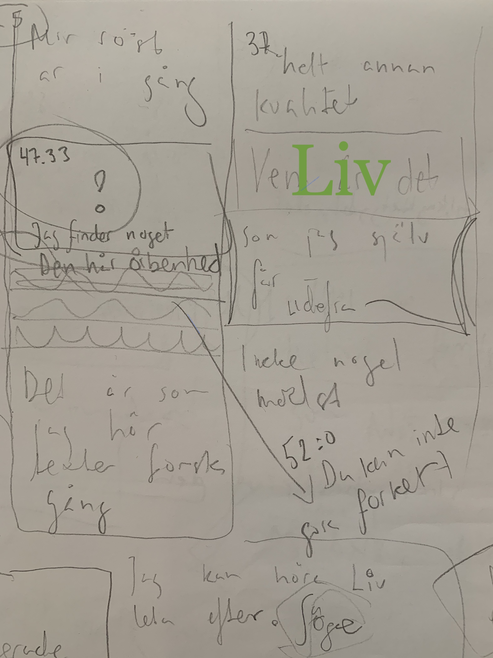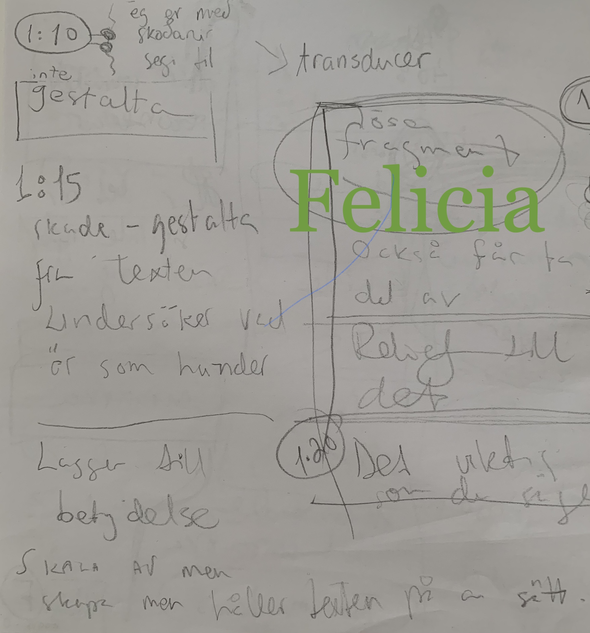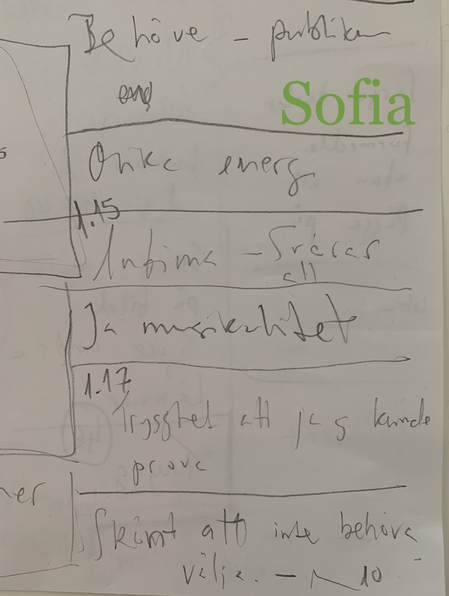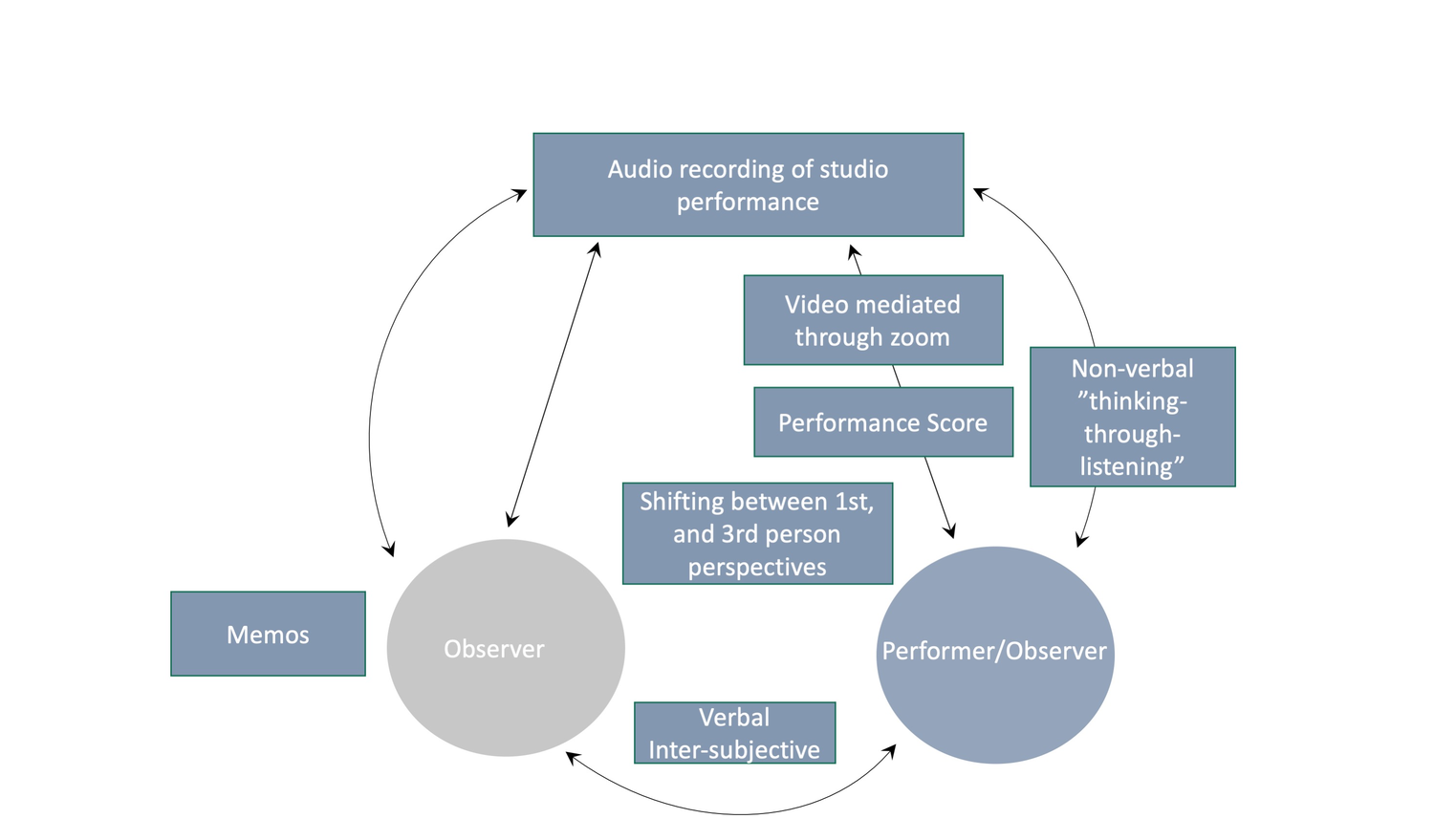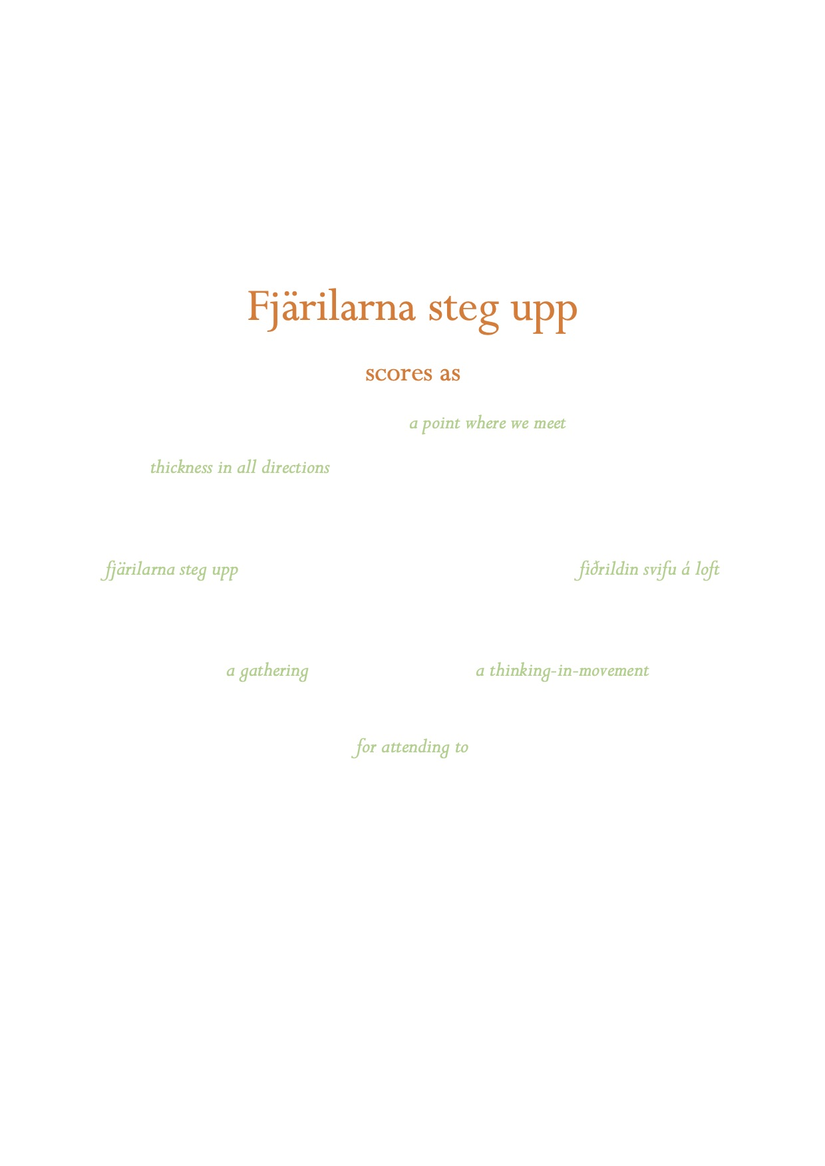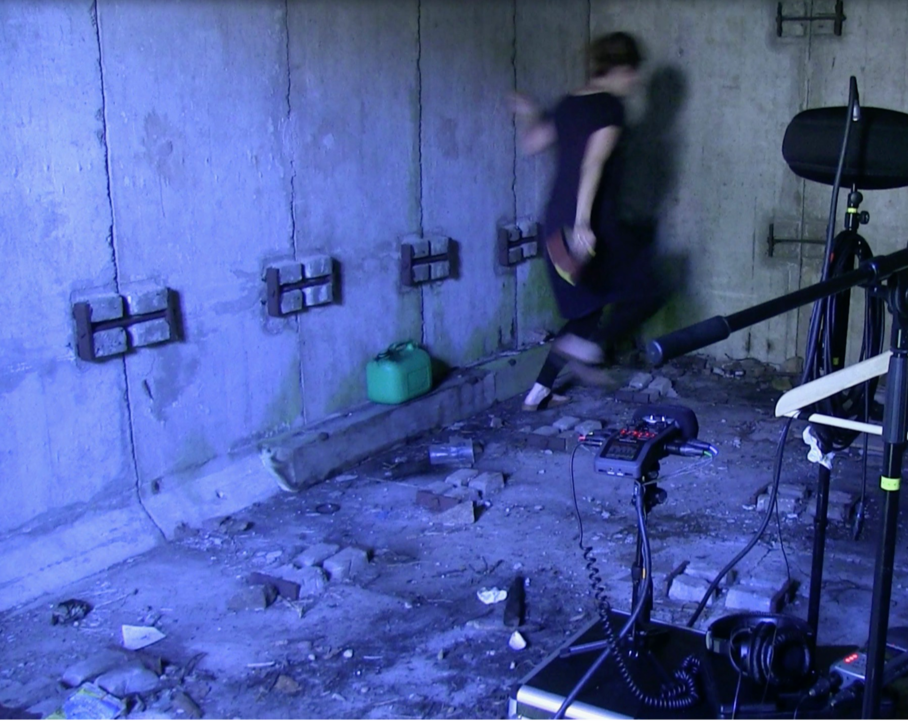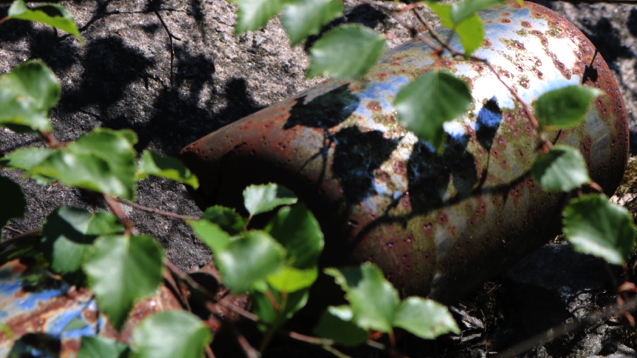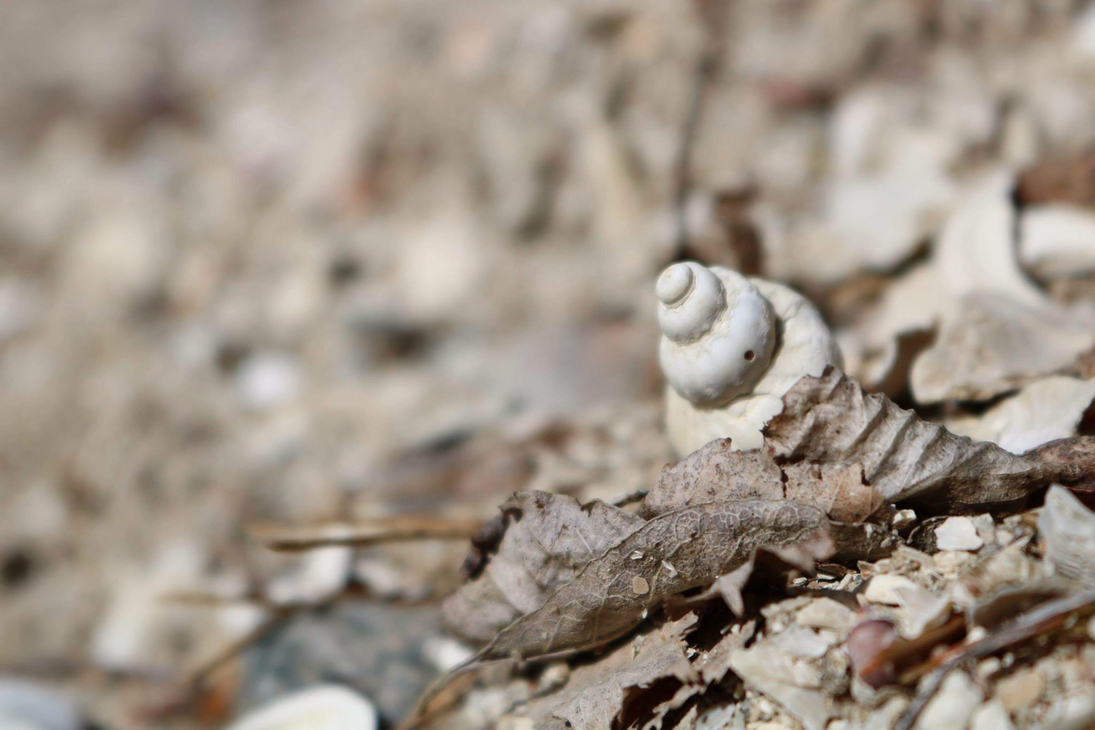This exposition is Part 2 of an article published in the Special Issue ‘Practices of Phenomenological and Artistic Research’, Phenomenology & Practice, Volume 17 (2022), No.1.
Part 1 is accessed here.
- You are first invited to engage with the practices presented in this exposition.
- Part 3 of this article is a text which addresses the practices presented in the exposition, exploring how methods for subjective and intersubjective inquiry can be created using the micro-phenomenology and stimulated recall methods. The text can be accessed here.
In this exposition you are invited to explore documentation of the artistic and phenomenological practices of the authors, and to consider how these examples of ecological sound art and analytical approaches through stimulated recall align. The exposition is structured in three parts: A) Aeolian guitar performance; B) The Tapeshavet project; C) Fjärilarna steg upp [The butterflies ascended].
In section A, several instances of Stefan Östersjö’s aeolian guitar performance are documented. This is a performative form of listening, in which the wind is sonified by a guitar, stringed around several trees. In section B, Halla Steinunn Stefánsdóttir’s practice of site-respondent activation is documented. Examples are drawn from the Tapeshavet project, carried out together with the poet Gunnar D. Hansson, composer Anders Hultqvist, and Stefan Östersjö, in the Bohuslän region on the west coast of Sweden. The use of recording technology is foundational, but the activation series explores the use of different tools that enable sonic attunement. In section C, documentation of Halla Steinunn Stefánsdóttir’s curatorial practice is found. In this third part, the technological mediation stretches beyond the auditory domain, to photography, video and a performance score. The audio files in the three sections have been subject to further analysis through stimulated recall, a process which we conceive of as a form of phenomenological variation.
The videos of aeolian guitar performance are both drawn from the same excursion to Klagshamns udde, a peninsula south of Malmö, Sweden. In the stimulated recall analysis, three variations were carried out: audio alone, audio and video, and audio with spectrogram. A general observation, which motivated the selection of perspectives, was that stimulated recall without the gestural content of the video, was significantly different, and that a cross-comparison between the three variations allowed for a more nuanced understanding of both human and non-human agency in the recordings.
Stefan: I search the wind and my body is in suspension, seeking the right position in which I can capture the wind. When the harmonics begin to sing, I seek to increase the dynamics by gradually shifting the angle of the instrument. Suddenly the wind really catches on and a dynamic peak is reached. I eventually bring the string tension down and the phrase ends with a descending glissando. I dampen all strings but one, and the wind centers more clearly around a central pitch. I give it melodic shape. It dies out and returns, creating a few melodic phrases. But then, a long macro phrase takes off, which continues to rise in volume and register. If the two previous phrases were attempts at "playing" the wind, here the agency of the wind takes over, in a manner similar to the natural forces at play in guitar feedback. Just like in electric guitar performance with feedback, I must seek the right angle, carefully shifting the position of the instrument, contracting my body, bending my knees as I find greater energy in the wind. At 3:20 I decide to release the string tension and bring the phrase to a close. (stimulated recall annotation, March 30, 2021)
Halla: The tropical palm house is a breathtaking space, it ‘engulfs you’ the minute you step in. There is visual abundance thanks to the multiple plants, placed in an almost labyrinth like structure. The light comes through the glass roof, and is in constant change, filtered through leaves of the trees outside and moving clouds. There is an earthy smell and as the plants require 80% air humidity you are embraced by heat. As you navigate the room you start noticing a high pitch sound that one can mistake for bird calls. If you stay for a while you may realise that there is a little camouflaged creature moving in the plant beds; the sound you have been hearing is the calls of ‘epidobates tricolor’ or multiple phantasmal poison frogs. Stepping into this space I felt I was physically met with something that could match this tingling sense of thickness that I was carrying with me. Like a trickle of shell sounds and rays of light streaming from my fingertip but resting in foglike density. This space was going to enable me to extend my lived experience and allow visitors to enter an explorative mode with all their senses. To enter a state of attunement. I also brought one of my mini rig speakers for this visit. I used the sound files from another 9 channel installation to hear how sound travels and blends into the space. A way to attune to possibilities of placement, but also a way for me to learn how sounds travel and diffuse amongst the plants; to learn what sounds do not belong here, and how dense they can be. Through the minirig I attune to sonic properties, resonance, respondency and resistance. (reflective annotation, April 12, 2021)
The first two sound objects are clearly articulated through body movement, most specifically in how their ending is defined by aeolian glissando. The third, longer phrase holds several, closely related sound objects, but is also characterised by a sudden louder object at 56 seconds into the clip. Here, a sudden gust of wind shifts both the spectral range and loudness. However, this expression of non-human intentionality is countered when I “play a wrong note” and unintentionally dampen the only sounding string (it can sometimes be hard to tell how many strings are actually playing...). In the last 45 seconds, the video captures how I experiment with the angle between guitar and wind, which gradually thins out the spectrum and at the end, when the guitar is held at chest height, only subtle high pitched iterations remain, mixing with distant bird song. (stimulated recall, annotation, March 28, 2021)
This section presents material from the curatorial practice which led to the creation of Fjärilarna steg upp [The butterflies ascended] (2020), an installation by Halla Steinunn Stefánsdóttir, created for the palm tree house at The Botanical Garden in Lund, Sweden, premiered in October, 2020. Fjärilarna steg upp draws on material collected in the Tapeshavet project, described in section B. This section outlines Stefánsdóttir’s curatorial practice, which resides within and bridges performative and compositional agency. As such the thinking-through-the-curatorial builds on attunement and phenomenological variation. The curatorial, in this project, manifests through various mediations, such as photographs, usage of playback technology in and out of the studio and in the creation of a performance score as well as in the final installation. The score was created building on analysis and stimulated recall of the site-respondent experiences within the Tapeshavet project. It also entailed attunement to the site designated for the installation. Furthermore, the score was created with three specific vocal artists in mind. The section includes excerpts from a stimulated recall with those artists, Sofia Härdig, Liv Kaastrup Vesterskov and Felicia Konrad, through which they unpack significant moments of their performances of the score. It provides an intersubjective perspective on the process, and as such reveals how performative listenings of responsivity can link to various biotic and abiotic entities, socio-material relations and sensorial attunement, including that of atmosphere. A second video (part 2) is shared to provide insight into memo taking, as well as the verbal inter-subjective exchange that took place during the session. In addition the exposition features a short ambisonic video, shot within the installation in October, 2020
In the book Tapeshavet (2017) by Gunnar D. Hansson, the author responds to the geological and human history at the Härnäset isthmus on the west coast of Sweden. In the ecological sound art project with the same title, four artists explored sites with a particular role in the book, with Hansson as guide. Stimulated recall analysis was carried out by Stefánsdóttir, of audio files recorded in this project. This included a performance in a gunpowder storage, as well as performance of a cylinder in an abandoned stone quarry. The third audio segment is a binaural composition by Stefánsdóttir, titled study in sound - the fossilised ocean (2020), which mixes two site-respondent activations performed by Stefánsdóttir (detailed in the third stimulated recall) and Östersjö.
Sofia - on her performance of 'Gränserna går inte där vi tror, inte nu, inte förr' in the performance score:
Here it is the fluttering curtain that I am working with through my voice. Partially through how the fluttering comes and goes, the movement, but also parallel to that how a forgotten melody, comes through the window, as a memory from a long time ago, but sort of a traditional melody, some Swedish folk tune, although not a certain one, but a fragmented one. It is not a tune that exists, but a memory. You can imagine that the radio was on while the curtain was fluttering. I think that was the picture that entered my mind.
Liv - on a repetition of a text found on page 7 in the performance score:
There you can hear that miniscule situations are imposed. I can hear loss. That one of them is loss. I can hear that I interpret ‘here’. Like ‘right here’. I want everyone that is listening into that now, right now. And that is how ‘not there’ becomes an explanation for elsewhere. But I hear also an interpretation of ‘not here’ as ‘be with me’. I hear that I put small interpretations into the repetitions to search for what is right. Since you ask me to repeat it. We are searching for something that is right.
Felicia - on performance of 'skal', found on 2nd page in the performance score:
This….yes...I reckon I could go on for two hours with ‘skal’ (meaning: shell). This word is so musical in a way that I cannot explain. It evokes musical feelings and at the same time its meaning is so concrete yet diffuse. But maybe it is also because ‘skal’ is like a sculpture to me. So I don’t know if it is therefore that I respond stronger to it. But I also think it has such a nice sequence to the word itself. In Swedish it can be like ‘skal’.... It is somehow an elastic word. And that is exciting.
Halla: So you are with the word...but do you bring forth imaginary. You talk a lot about sculpture. Could you share what is going on between these different...
Felicia: For me it is both the movement and the sculpture. And like...my own ‘skal’ (meaning: shell). This whole fossilised ocean, all those shells that create these amazing sounds together with the water and the air and the earth. And that lives...or do they perhaps not live? There are so many dimensions to this. But vocally, to improvise on ‘skal’, I could do that whenever and for hours on end. I cannot explain it...for it is something about the word that I do not understand. What form it has. I am maybe wondering about that. Certain things, like you take ‘blomma’ (meaning: flower). Like: ‘blomma’, it is like…. Like a...it is fun...but ‘skal’.... It becomes...I have never expressed it in this way but just had the sensation. So it is also the first time that I experience this within myself. I think it is exciting to follow what happens when you meet something. Here I am doing it in a specific context, and I have not done that earlier. Then I just went for it. But here, I remain with the sensorial feelings of the word itself. I do not leave the word. It is between the sound, and the word, and the meaning. It is hard…. It is just such a favourite. ‘skal’. And it is also a discovery, that I made when I received the score. I felt: ‘skal’...I just love it and I had no idea that I did. (stimulated recall annotations, April 15-16, 2021)
Halla: I am inside a gunpowder storage, moving in circular movements; performing the movements of wind and ocean currents in the North Atlantic. I am performing a topographical sonic mapping of this space, which stored dynamite used to blow up the 920 million year old granite on this site. I learned such a circular performance through Angela Rawlings and have memories of us performing in various environments. I start tentatively with a stone, at a walking pace, listening to its qualities, which are quite pleasant although a bit mucus like in its sound. The mucus effect is perhaps not what an outsider would think of when hearing it but the touch between the stone and the humid wall prompts a tactile feeling of a mucus like surface, which results in a dampened sound. There is almost just as much sound coming from my walking, as I step on the debris. After this initial attunement to the sound I go and pick up new tools and am ready for performance. I enter a circulation at a greater speed, with a larger stone in hand. It proves to be quite base-like. Next up is a found tool resembling a putty knife, and now things start happening as it wakes up the space and manages to draw out a broad spectrum of sound. My colleagues are listening, Stefan comments “that’s a good sound”, and at the same time Gunnar is reminded that he has sandpaper in his bag. After a round with a hairbrush, whose bamboo pins don’t bring about much ‘rapport’, I switch over to Gunnar’s sandpaper. It creates a friction that sends vibrations all up my arm and is threateningly deafening, but it is the right whirlpool of sound as it gets the space vibrating like never before. I become a bow and shoot through space, and cannot linger in my usual habit of standing and listening. It is hot, and I try not to stumble over the debris and in between performances I’m gasping for breath. (stimulated recall annotation, April 10, 2021)
Halla: It is the second day of our work and we have headed to a shell bank; a site of a fossilised ocean. It is scorchingly hot, as if the acceleration of climate breakdown is making itself felt. I get the green light to start with my performance, but throughout it my colleagues are watching and assessing the possibilities, which prompts their own ideas for the next performance. I place myself amidst this testimony of erosion and destruction to activate the shells. In order to catch the sound I stick my DIY kit, or a coat hanger with two DPA4060s into the ground close to me. This microphone setup allows for detailed close up recording, and has been one of my main go-to devices. As I enter the performance my movements are miniscule, I feel like I have to handle the shells with care, a testimony to life lived 9.000 years ago. At the same time I know that my kit will catch this tactile closeness, and invite future listeners into this private sphere. Not long after I start my exploration I have to stop and move my gear as the wind is disturbing the microphones. I resume my performance. There are endless fragments, and they have different sonic qualities, some are matte, others shimmery. I let the shells play each other by rolling them down the bank. A new disruption; now the shells hit the equipment. Eventually I find a good angle and can let them activate each other. I’d really prefer to be here alone and perform for longer than is possible, to get lost in this. I want to be ‘with’ what is called ´smæð´ in my language or smallness. (stimulated recall annnotation, April 10, 2021)
Halla: Stefan and I are playing a rusty cylinder in an abandoned quarry. It all started with Anders spotting the object and starting to experiment with it. We have taken turns playing, using various stones and rusty wires but right now I’m exploring what sounds birch bark can bring out of it. Anders has wandered off to another spot, but Stefan is next to me. The process consists of activations followed by reflection. I’m starting to sense from my exploration that it holds potential. “There is something nice there” I say, Stefan agrees with me and asks how slow it can be and still squeak. I verbalise my analytical thoughts, regarding what is producing this and dive into a new activation. I try to slow down, in order to create more friction, it lets out squeaking dryish bark sound. As I stop, I send out controlled breaths, what could be an indication as to how much focus this requires. Stefan starts wondering if it would be worth moving the microphones to catch the sound from another angle. I start again and move into the inside of the cylinder and then suddenly it happens, the sound transforms, into a scintillating bell like sound combined with immense almost teeth clenching friction created between the bark and the cylinder’s surface. I stop to say it is amazing and he concurs. I immedietaly launch into more playing, we are completely hooked as I try and bring forth this magical sound that just appeared and quite simply get a better grasp of the technique. It is a mix of amazement over what has appeared, and at the same time a very analytical thinking connected to material and movements, aimed at producing again the cause of our amazement. In the next stop Stefan facilitates by suggesting that I can alter my position, he can hold onto the cylinder to stabilize it. I continue and in the next break we again utter our amazement, as Stefan says, you are both getting sound from the inside and outside. We also realise that we have lost track of time, our colleagues are waiting to go for lunch. And we negotiate time for further performance for like Stefan says; “this sound is so great it is almost like a piece”. I concur; “it is like a piece”. Throughout this we are completely focused, in a process which is one of shared listening, Stefan is thinking through my performance. By an awareness of Stefan’s listening, my listening is altered. (stimulated recall annotation, April 12, 2021)

